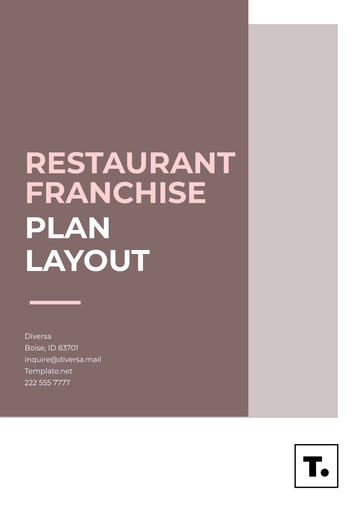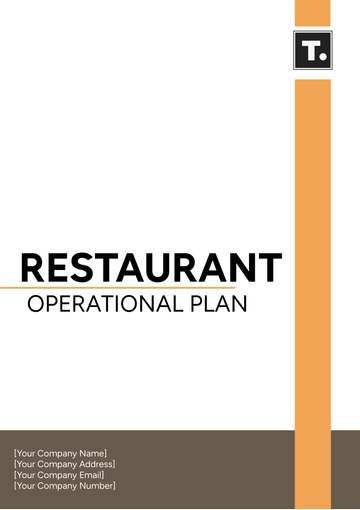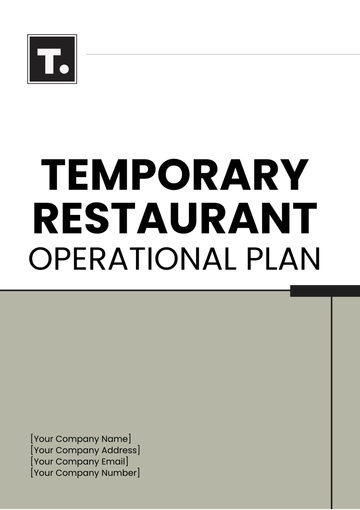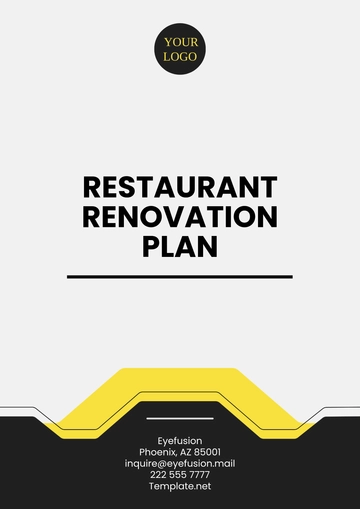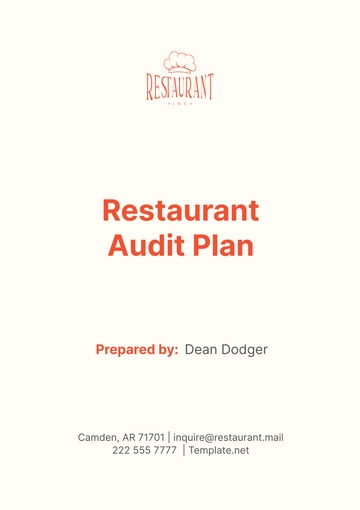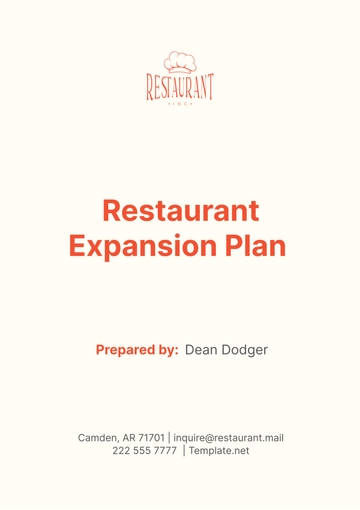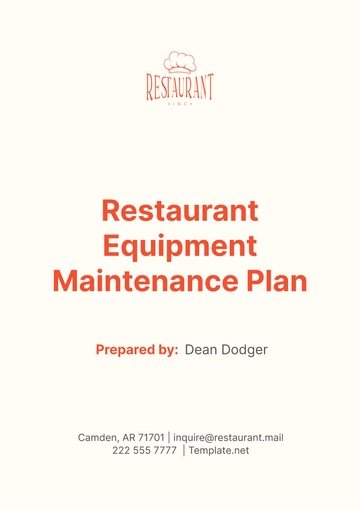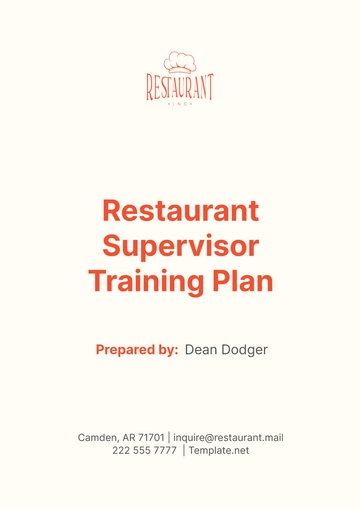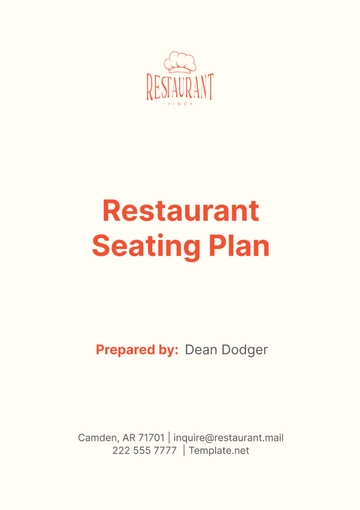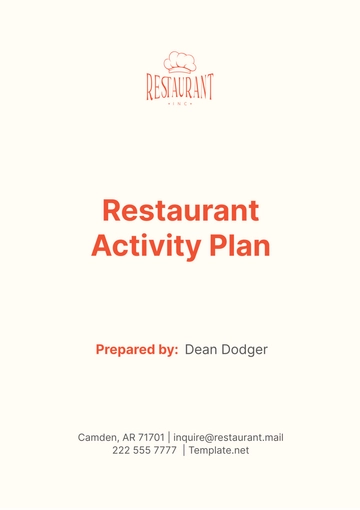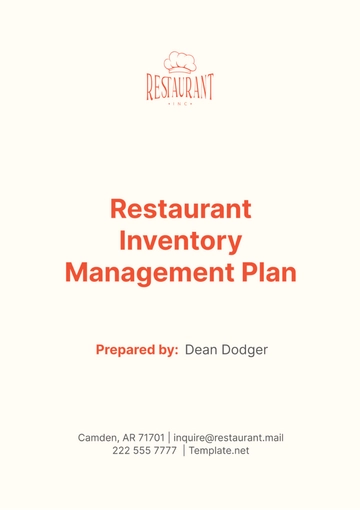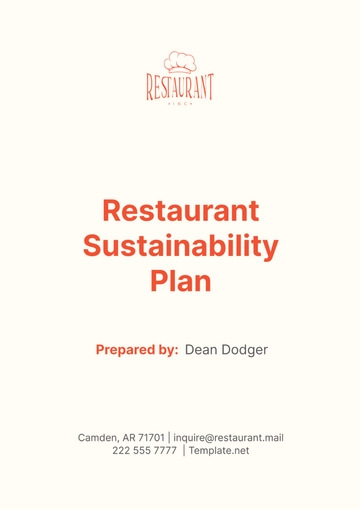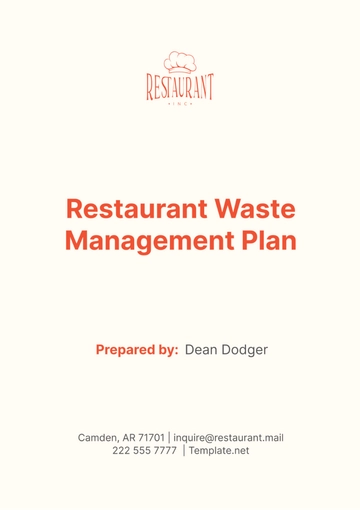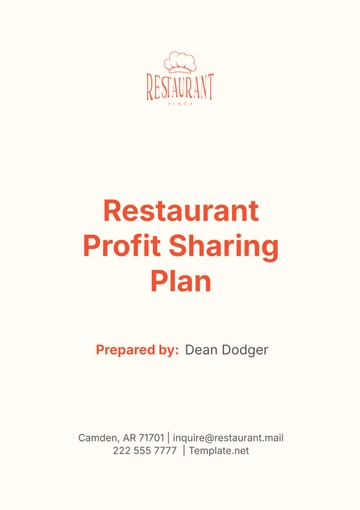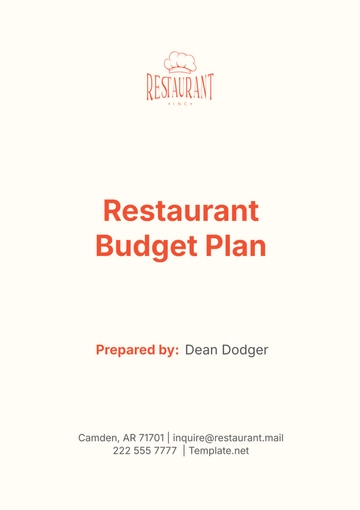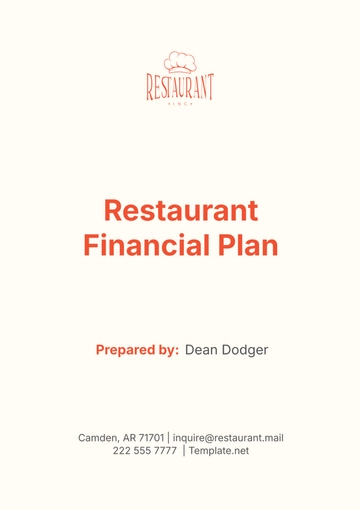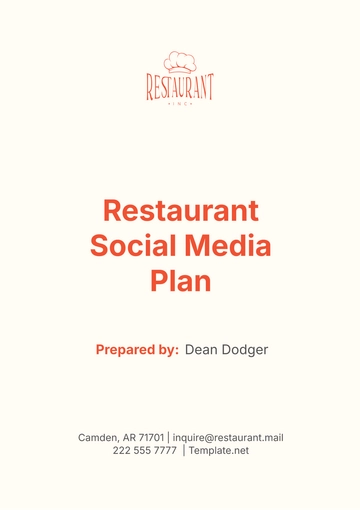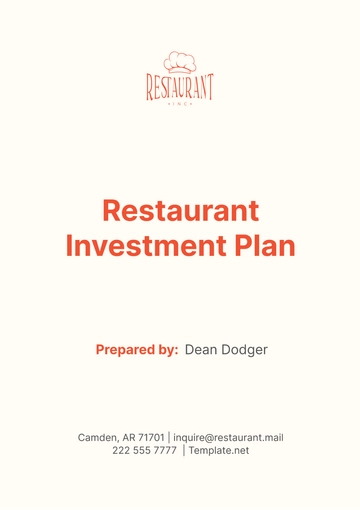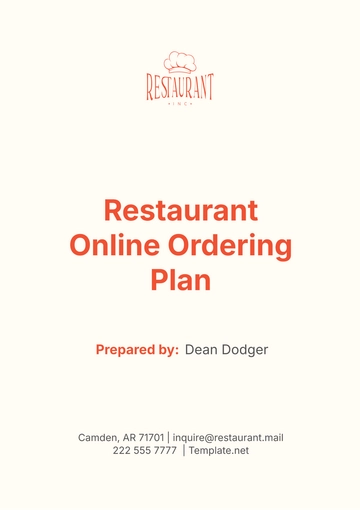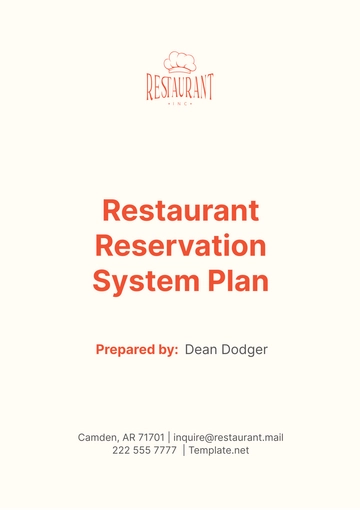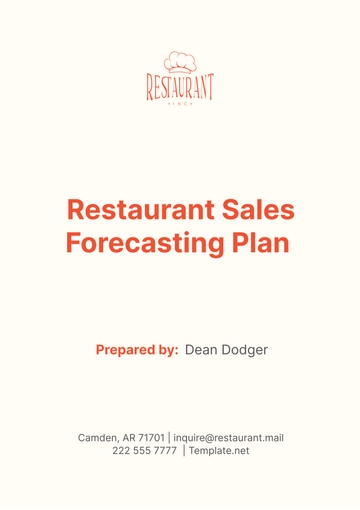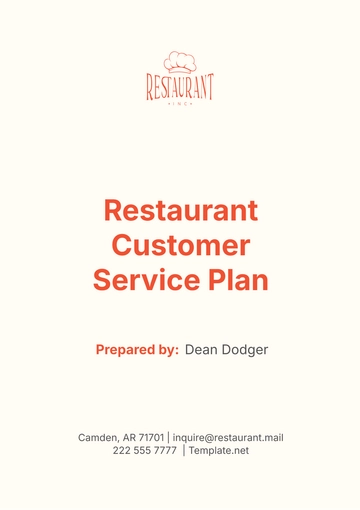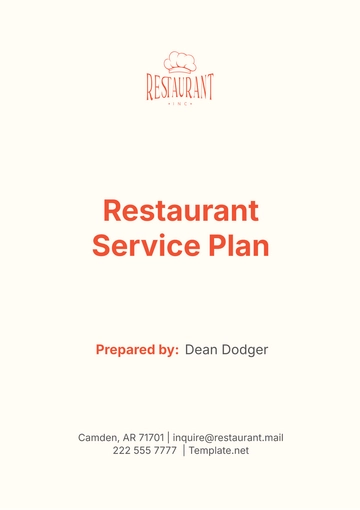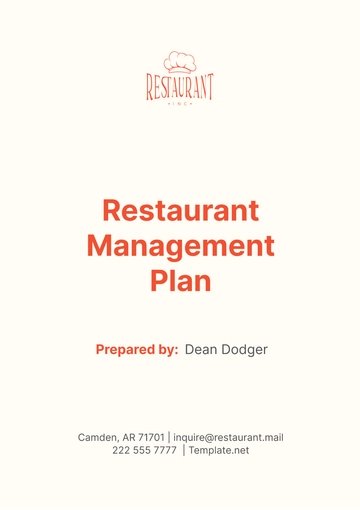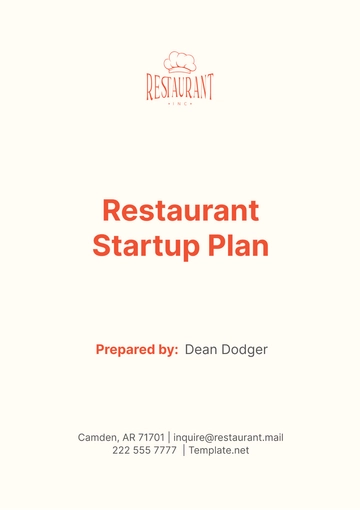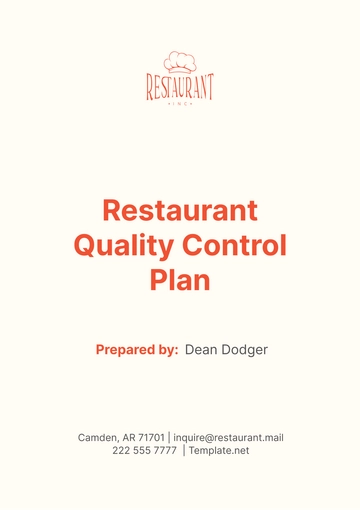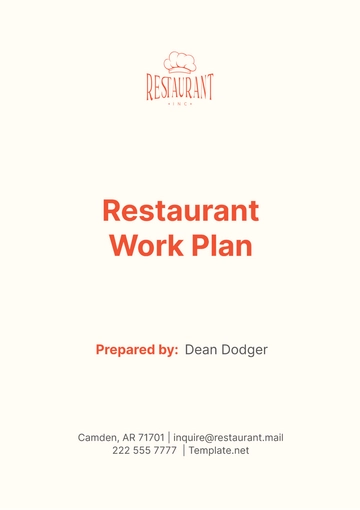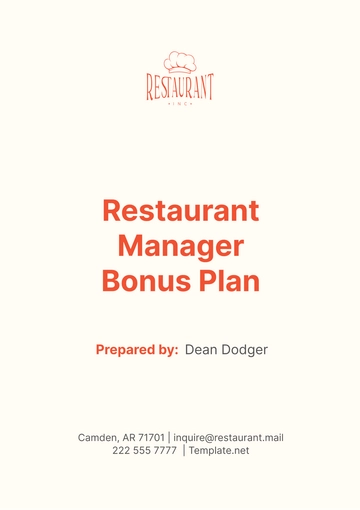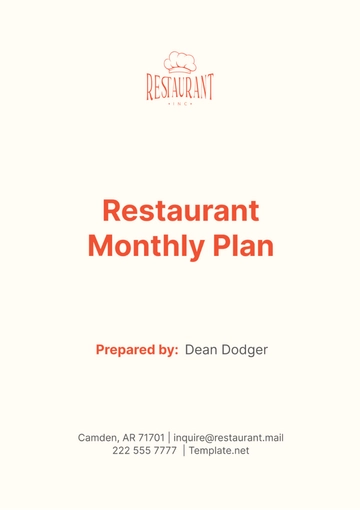Free Restaurant Audit Plan
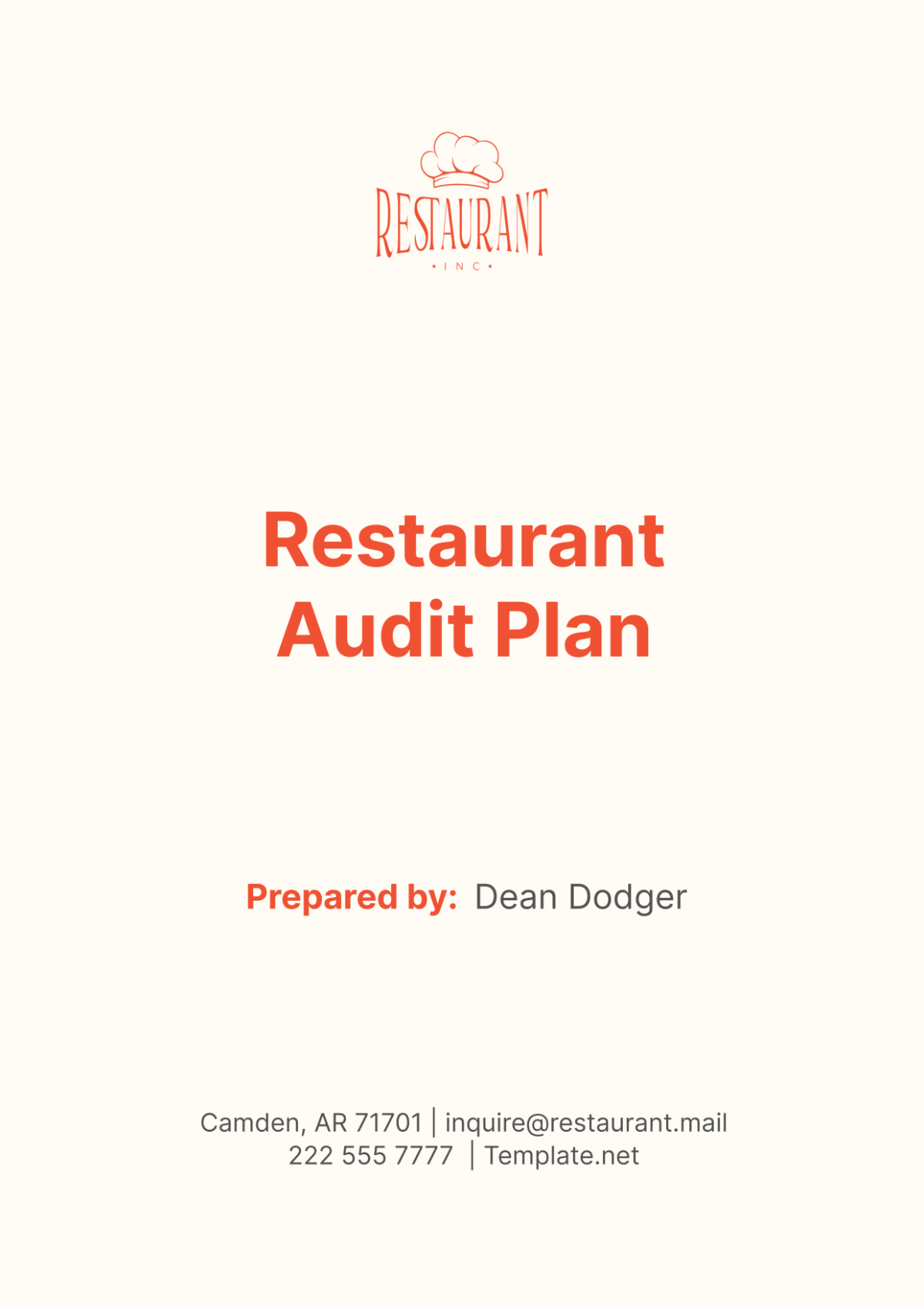
I. Introduction
A. Purpose of the Audit
The purpose of this audit is to evaluate the operational, financial, and compliance aspects of [Your Company Name]'s restaurant to ensure adherence to industry standards, regulatory requirements, and internal policies. This comprehensive assessment aims to identify areas for improvement and enhance overall performance. By conducting this audit, we aim to ensure that the restaurant maintains high-quality standards in food safety, customer service, and financial management, thus fostering trust and loyalty among customers.
B. Scope of the Audit
The audit will cover all operational facets of the restaurant, including food safety, hygiene, financial management, customer service, and compliance with local health and safety regulations. The scope will also extend to employee practices, inventory management, and facility maintenance. By examining each of these areas comprehensively, we seek to provide a holistic view of the restaurant's operations and identify opportunities for enhancement.
C. Audit Objectives
Assess compliance with food safety and hygiene standards to mitigate risks of foodborne illnesses and ensure the health and safety of customers and staff.
Evaluate financial records and transactions for accuracy and integrity, aiming to prevent fraud, minimize financial losses, and optimize financial performance.
Examine customer service practices and customer satisfaction levels to identify areas for improvement and enhance overall dining experiences.
Review compliance with regulatory requirements, including local health codes, labor laws, and licensing regulations, to avoid penalties and legal issues.
Identify operational inefficiencies and recommend improvements to streamline processes, reduce costs, and enhance operational effectiveness, ultimately maximizing profitability.
II. Audit Plan
A. Audit Team
The audit will be conducted by a team of experienced auditors from [Your Company Name], comprising:
Lead Auditor: John Doe
Financial Auditor: Jane Smith
Operational Auditor: Mark Johnson
Compliance Auditor: Emily Davis
B. Audit Schedule
The audit will be conducted over a period of one week, from January 10, 2050, to January 16, 2050. The schedule is as follows:
Date | Activity | Auditor(s) |
|---|---|---|
Jan 10, 2050 | Opening Meeting and Preliminary Review | All Auditors |
Jan 11, 2050 | Food Safety and Hygiene Audit | Mark Johnson |
Jan 12, 2050 | Financial Records Audit | Jane Smith |
Jan 13, 2050 | Customer Service Audit | Emily Davis |
Jan 14, 2050 | Regulatory Compliance Review | Emily Davis |
Jan 15, 2050 | Facility and Equipment Inspection | Mark Johnson |
Jan 16, 2050 | Closing Meeting and Final Report Preparation | All Auditors |
III. Audit Procedures
A. Preliminary Review
Review of previous audit reports and follow-up actions to identify recurring issues and track progress.
Initial meeting with restaurant management to discuss audit objectives, scope, and expectations, ensuring alignment between auditors and management.
B. Food Safety and Hygiene Audit
Inspection of kitchen and food preparation areas for cleanliness, ensuring compliance with sanitation standards and minimizing risks of contamination.
Verification of food storage practices and temperature controls to prevent spoilage and maintain food quality.
Review of employee hygiene practices and training records to ensure staff members adhere to proper hygiene protocols and receive adequate training.
Evaluation of pest control measures to prevent infestations and ensure a hygienic environment.
Sample testing of food items for quality and safety, including microbial testing and sensory evaluation, to ensure compliance with food safety standards.
C. Financial Records Audit
Examination of daily sales records and cash handling procedures to detect any irregularities or discrepancies, ensuring the accuracy and reliability of financial data.
Review of bank statements and reconciliation processes to verify the accuracy of financial transactions and identify any unauthorized activities.
Verification of supplier invoices and payment records to ensure that payments are made accurately and on time, minimizing the risk of overpayment or fraud.
Assessment of inventory management and stock control systems to identify inefficiencies and minimize inventory shrinkage or spoilage.
Analysis of expense records and cost management practices to identify areas for cost reduction and improve overall financial performance.
D. Customer Service Audit
Observation of customer interactions and service delivery to assess the quality of customer service and identify areas for improvement.
Review of customer feedback and complaint resolution processes to ensure that customer concerns are addressed promptly and effectively.
Evaluation of staff training programs and performance records to ensure that employees have the necessary skills and knowledge to deliver excellent customer service.
Assessment of customer satisfaction surveys and results to gauge overall customer satisfaction levels and identify areas for improvement.
Mystery shopping to evaluate service quality anonymously and identify any discrepancies between expected and actual service standards.
E. Regulatory Compliance Review
Verification of compliance with local health and safety regulations, including food safety standards, sanitation requirements, and occupational health regulations.
Review of licenses and permits to ensure that the restaurant operates legally and meets all regulatory requirements.
Inspection of fire safety measures and emergency protocols to ensure the safety of customers and staff in the event of an emergency.
Assessment of compliance with labor laws and employee rights, including minimum wage requirements, overtime regulations, and employee benefits.
Evaluation of waste management and environmental policies to minimize the restaurant's environmental footprint and ensure compliance with environmental regulations.
F. Facility and Equipment Inspection
Inspection of dining areas, restrooms, and exterior premises for cleanliness, safety, and overall maintenance.
Assessment of kitchen equipment and maintenance records to ensure that equipment is functioning properly and meets safety standards.
Evaluation of HVAC and refrigeration systems to ensure proper temperature control and prevent food spoilage.
Review of sanitation practices and cleaning schedules to maintain a hygienic environment and prevent the spread of foodborne illnesses.
Identification of potential safety hazards, such as slippery floors or malfunctioning equipment, and recommendations for corrective actions to minimize risks to staff and customers.
IV. Reporting
A. Preliminary Findings Report
A preliminary findings report will be presented to restaurant management on January 14, 2050. This report will outline initial observations and any immediate concerns requiring prompt attention, providing management with an early indication of areas needing improvement.
B. Final Audit Report
The final audit report will be compiled and delivered by January 20, 2050. It will include detailed findings, risk assessments, and actionable recommendations for improvement, providing management with a comprehensive overview of the audit results and a roadmap for addressing identified issues.
C. Executive Summary
The executive summary will provide an overview of the audit findings, highlighting key issues and suggested actions for management's attention. This summary is designed for quick reference by senior management, providing them with a concise overview of the audit results and recommendations.
D. Detailed Findings
The detailed findings section will break down observations by audit area, including:
Non-compliance issues and their implications, providing management with a clear understanding of the severity and potential consequences of identified issues.
Areas of good practice and strengths, recognizing areas where the restaurant excels and highlighting best practices that can be replicated in other areas.
Specific recommendations for each audit area, outlining actionable steps for addressing identified issues and improving overall performance.
Priority levels and timelines for recommended actions, allowing management to prioritize tasks based on their urgency and allocate resources accordingly.
E. Appendices
The appendices will include supporting documents, such as:
Audit checklists and completed forms, providing a detailed record of audit procedures and findings for reference.
Photographs and evidence of non-compliance, illustrating observed issues and providing context for recommendations.
Copies of relevant policies and procedures, ensuring transparency and facilitating implementation of recommended changes.
Detailed charts and graphs illustrating findings, such as trends in customer satisfaction scores or financial performance metrics, aiding in the visual representation of audit results.
V. Follow-Up
A. Action Plan Development
Restaurant management will develop an action plan to address the audit findings, outlining specific steps, responsible parties, and deadlines. This action plan will serve as a roadmap for implementing recommended changes and improving overall performance.
B. Implementation Review
A follow-up review will be conducted within three months to assess the implementation of the action plan. This review will ensure that corrective measures have been effectively applied and that progress is being made towards addressing identified issues.
C. Continuous Monitoring
[Your Company Name] will establish a continuous monitoring process to maintain compliance and operational excellence, involving regular internal audits and ongoing staff training. This ongoing monitoring will help ensure that improvements are sustained over time and that the restaurant continues to meet or exceed industry standards.
VI. Conclusion
The restaurant audit by [Your Company Name] is designed to provide a thorough evaluation of operational and financial practices, ensuring high standards of food safety, customer service, and regulatory compliance. By addressing the findings and implementing the recommended actions, the restaurant can achieve improved performance, customer satisfaction, and operational efficiency. Through proactive management and continuous improvement efforts, [Your Company Name] remains committed to delivering exceptional dining experiences and maintaining its reputation as a leader in the industry.
- 100% Customizable, free editor
- Access 1 Million+ Templates, photo’s & graphics
- Download or share as a template
- Click and replace photos, graphics, text, backgrounds
- Resize, crop, AI write & more
- Access advanced editor
Ensure compliance and accountability with Template.net's Restaurant Audit Plan Template. This customizable document offers a structured format for planning and conducting internal audits of your restaurant's operations, processes, and financials. Identify areas for improvement and mitigate risks. Editable in our Ai Editor Tool for seamless customization to match your restaurant's audit objectives and scope.
You may also like
- Finance Plan
- Construction Plan
- Sales Plan
- Development Plan
- Career Plan
- Budget Plan
- HR Plan
- Education Plan
- Transition Plan
- Work Plan
- Training Plan
- Communication Plan
- Operation Plan
- Health And Safety Plan
- Strategy Plan
- Professional Development Plan
- Advertising Plan
- Risk Management Plan
- Restaurant Plan
- School Plan
- Nursing Home Patient Care Plan
- Nursing Care Plan
- Plan Event
- Startup Plan
- Social Media Plan
- Staffing Plan
- Annual Plan
- Content Plan
- Payment Plan
- Implementation Plan
- Hotel Plan
- Workout Plan
- Accounting Plan
- Campaign Plan
- Essay Plan
- 30 60 90 Day Plan
- Research Plan
- Recruitment Plan
- 90 Day Plan
- Quarterly Plan
- Emergency Plan
- 5 Year Plan
- Gym Plan
- Personal Plan
- IT and Software Plan
- Treatment Plan
- Real Estate Plan
- Law Firm Plan
- Healthcare Plan
- Improvement Plan
- Media Plan
- 5 Year Business Plan
- Learning Plan
- Marketing Campaign Plan
- Travel Agency Plan
- Cleaning Services Plan
- Interior Design Plan
- Performance Plan
- PR Plan
- Birth Plan
- Life Plan
- SEO Plan
- Disaster Recovery Plan
- Continuity Plan
- Launch Plan
- Legal Plan
- Behavior Plan
- Performance Improvement Plan
- Salon Plan
- Security Plan
- Security Management Plan
- Employee Development Plan
- Quality Plan
- Service Improvement Plan
- Growth Plan
- Incident Response Plan
- Basketball Plan
- Emergency Action Plan
- Product Launch Plan
- Spa Plan
- Employee Training Plan
- Data Analysis Plan
- Employee Action Plan
- Territory Plan
- Audit Plan
- Classroom Plan
- Activity Plan
- Parenting Plan
- Care Plan
- Project Execution Plan
- Exercise Plan
- Internship Plan
- Software Development Plan
- Continuous Improvement Plan
- Leave Plan
- 90 Day Sales Plan
- Advertising Agency Plan
- Employee Transition Plan
- Smart Action Plan
- Workplace Safety Plan
- Behavior Change Plan
- Contingency Plan
- Continuity of Operations Plan
- Health Plan
- Quality Control Plan
- Self Plan
- Sports Development Plan
- Change Management Plan
- Ecommerce Plan
- Personal Financial Plan
- Process Improvement Plan
- 30-60-90 Day Sales Plan
- Crisis Management Plan
- Engagement Plan
- Execution Plan
- Pandemic Plan
- Quality Assurance Plan
- Service Continuity Plan
- Agile Project Plan
- Fundraising Plan
- Job Transition Plan
- Asset Maintenance Plan
- Maintenance Plan
- Software Test Plan
- Staff Training and Development Plan
- 3 Year Plan
- Brand Activation Plan
- Release Plan
- Resource Plan
- Risk Mitigation Plan
- Teacher Plan
- 30 60 90 Day Plan for New Manager
- Food Safety Plan
- Food Truck Plan
- Hiring Plan
- Quality Management Plan
- Wellness Plan
- Behavior Intervention Plan
- Bonus Plan
- Investment Plan
- Maternity Leave Plan
- Pandemic Response Plan
- Succession Planning
- Coaching Plan
- Configuration Management Plan
- Remote Work Plan
- Self Care Plan
- Teaching Plan
- 100-Day Plan
- HACCP Plan
- Student Plan
- Sustainability Plan
- 30 60 90 Day Plan for Interview
- Access Plan
- Site Specific Safety Plan
